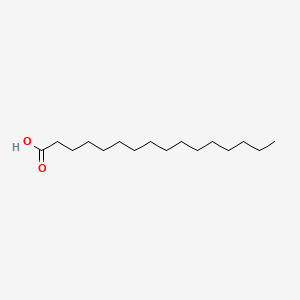| Authors | Title | Published | Journal | PubMed Link |
|---|---|---|---|---|
| Hidaka T et al. | Screening of microbial products modifying the action of leptin (obese gene product) by a biosensor. | 1999 | J. Antibiot. | pmid:10395281 |
| Murakami K et al. | Evidence for direct binding of fatty acids and eicosanoids to human peroxisome proliferators-activated receptor alpha. | 1999 | Biochem. Biophys. Res. Commun. | pmid:10403814 |
| Turcotte LP et al. | Training-induced elevation in FABP(PM) is associated with increased palmitate use in contracting muscle. | 1999 | J. Appl. Physiol. | pmid:10409586 |
| Heathcote J et al. | A pilot study of the CY-1899 T-cell vaccine in subjects chronically infected with hepatitis B virus. The CY1899 T Cell Vaccine Study Group. | 1999 | Hepatology | pmid:10421664 |
| Sugden MC et al. | Hyperthyroidism facilitates cardiac fatty acid oxidation through altered regulation of cardiac carnitine palmitoyltransferase: studies in vivo and with cardiac myocytes. | 1999 | Horm. Metab. Res. | pmid:10422724 |
| Komatsu M et al. | Augmentation of Ca2+-stimulated insulin release by glucose and long-chain fatty acids in rat pancreatic islets: free fatty acids mimic ATP-sensitive K+ channel-independent insulinotropic action of glucose. | 1999 | Diabetes | pmid:10426371 |
| Carlsson C et al. | Sodium palmitate induces partial mitochondrial uncoupling and reactive oxygen species in rat pancreatic islets in vitro. | 1999 | Endocrinology | pmid:10433196 |
| Ricci JE et al. | Cleavage and relocation of the tyrosine kinase P59FYN during Fas-mediated apoptosis in T lymphocytes. | 1999 | Oncogene | pmid:10435619 |
| Cocco T et al. | Arachidonic acid interaction with the mitochondrial electron transport chain promotes reactive oxygen species generation. | 1999 | Free Radic. Biol. Med. | pmid:10443919 |
| Schmitz-Peiffer C et al. | Ceramide generation is sufficient to account for the inhibition of the insulin-stimulated PKB pathway in C2C12 skeletal muscle cells pretreated with palmitate. | 1999 | J. Biol. Chem. | pmid:10446195 |
palmitic acid
palmitic acid is a lipid of Fatty Acyls (FA) class. The involved functions are known as Apoptosis, Synthesis, inhibitors, Oxidation and targeting. Palmitic acid often locates in Extracellular, Muscle, Protoplasm, Body tissue and Blood. The related lipids are Palmitates, Sodium Palmitate and saturated fat.
Cross Reference
Introduction
To understand associated biological information of palmitic acid, we collected biological information of abnormalities, associated pathways, cellular/molecular locations, biological functions, related genes/proteins, lipids and common seen animal/experimental models with organized paragraphs from literatures.
What diseases are associated with palmitic acid?
There are no associated biomedical information in the current reference collection.
No disease MeSH terms mapped to the current reference collection.
PubChem Associated disorders and diseases
What pathways are associated with palmitic acid
There are no associated biomedical information in the current reference collection.
PubChem Biomolecular Interactions and Pathways
Link to PubChem Biomolecular Interactions and PathwaysWhat cellular locations are associated with palmitic acid?
Visualization in cellular structure
Associated locations are in red color. Not associated locations are in black.
Related references are published most in these journals:
| Location | Cross reference | Weighted score | Related literatures |
|---|
What functions are associated with palmitic acid?
Related references are published most in these journals:
| Function | Cross reference | Weighted score | Related literatures |
|---|
What lipids are associated with palmitic acid?
Related references are published most in these journals:
| Lipid concept | Cross reference | Weighted score | Related literatures |
|---|
What genes are associated with palmitic acid?
There are no associated biomedical information in the current reference collection.
What common seen animal models are associated with palmitic acid?
There are no associated biomedical information in the current reference collection.
